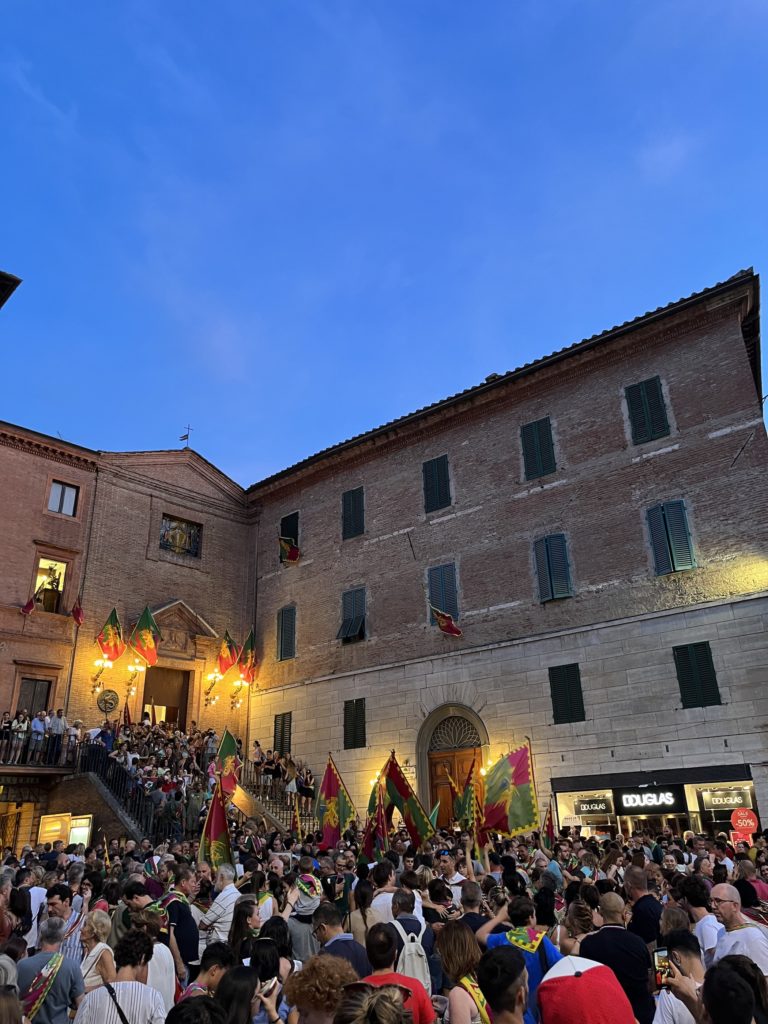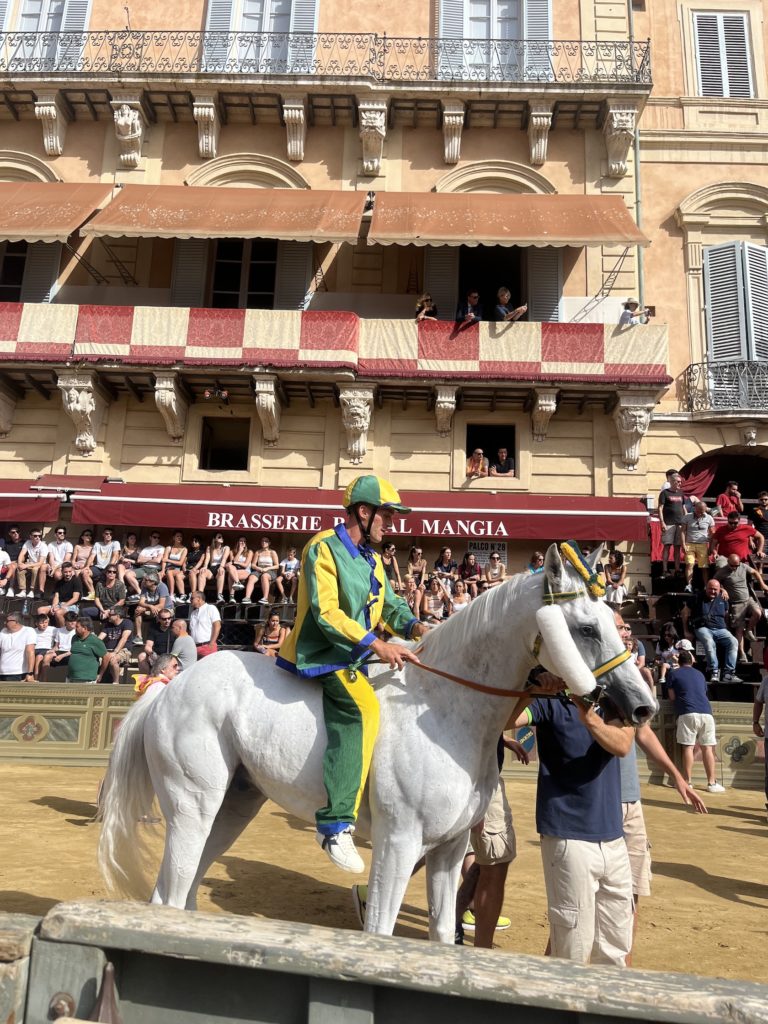Last weekend was Siena’s most important tradition, the Palio horse race. This is a tradition that started in 1482. It occurs twice a year, once in July and once in August. In class, we learned all about this tradition and the contrada system in Siena.
In Siena, there are 17 contradas that are basically like 17 different neighborhoods. Each one has its own small territory in Siena and is its own small community. They have their own governments, community celebrations, and events that occur throughout the year. Every contrada also has its own chapel, museum and unique history. Some of the contradas are allies and some are enemies, which is an important part of the Palio. Each contrada also has its own flag and is represented by a different animal or symbol. I live in the Lupa contrada, which means she-wolf in English.
The Palio is a horse race between 10 of the 17 contradas. Each year, the 7 contradas that didn’t get to race last year automatically get to race, and 3 more contradas are randomly chosen. The race happens in the large Piazza del Campo. The outside of the Piazza is turned into a track and the inside is where people watch the race. There are a number of different events that happen during the week leading up to the race. There are practice trials each morning and an initial race where 10 horses are picked from 35 to be the racing horses. There is also a large event where everyone in the city comes to the piazza to see which horse is assigned to each contrada. We went as a school to go watch this event on Wednesday. There were two horses that were considered “better” than the other horses as they had already raced in the Palio in the past. When the Istrice contrada heard that they got one of these horses, they all screamed and were extremely happy. They then ran to their horse and chanted their fight song as they left the piazza. Each contrada also has a big feast the night before the race. We were able to go to the feast of the Istrice contrada, which had more than 2,400 people in attendance. The food was really delicious. The next day, we watched the Palio race on TV in a restaurant. It was 95 degrees that day and we didn’t want to stand in the intense heat for 4 hours. The Drago contrada won the Palio, which lasted much longer than usual as there were many false starts. Everyone ran to the Drago contrada right after the race to celebrate with the community. It was a really amazing thing to be a part of and see.
The winner of the Palio has to pay all of the other contradas. The winner also gets the banner that is painted for that year. The contrada that wins is considered reborn and the “new baby,” while the contrada that has won least recently is considered the “grandmother.” The Palio is extremely intense and emotional. It is normal to see the losers crying immediately after the race and in the days following the race. My professor told me a story about a man he saw praying in the streets to God, asking why his contrada did not win. The man was balling and begging God for a victory. The contradas are extremely competitive. If two people are married and from different contradas, they won’t see each other for a couple of days before the race. Another interesting thing I learned is that the “worst” loss is not the contrada that gets last place, but the one that gets second place. This is because they were so close to winning, but did not win.


